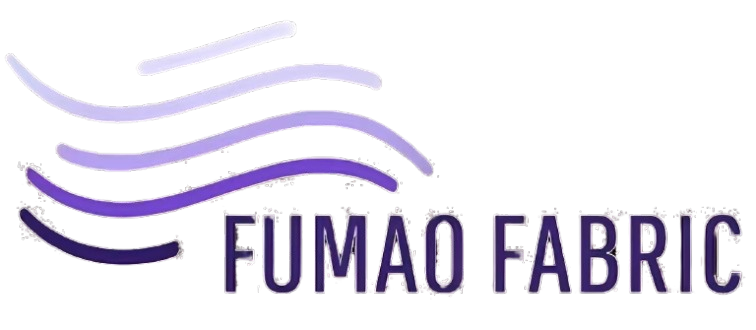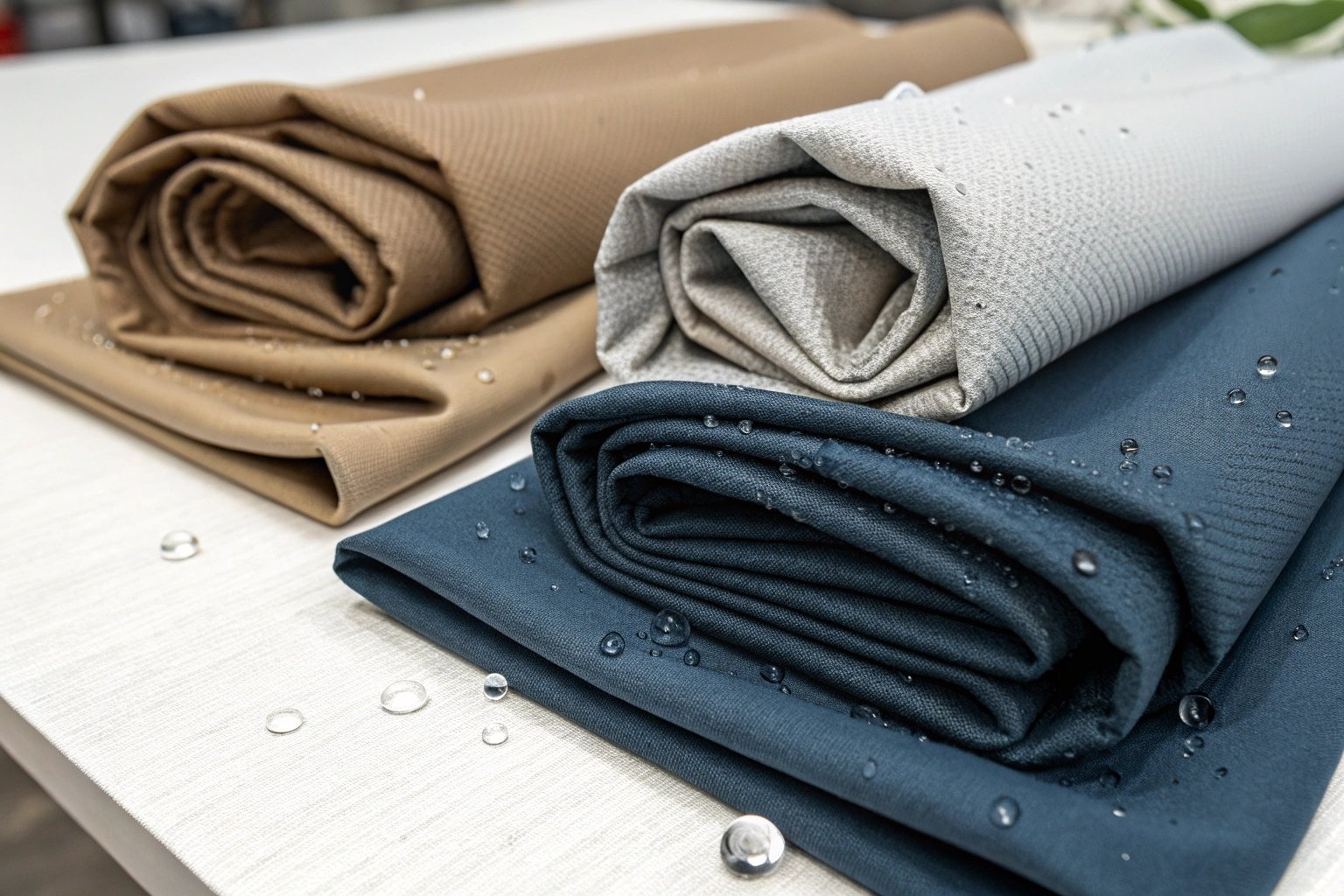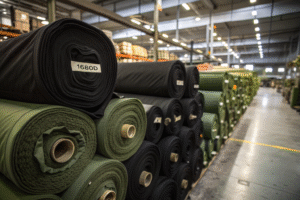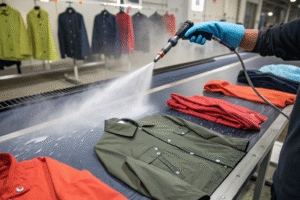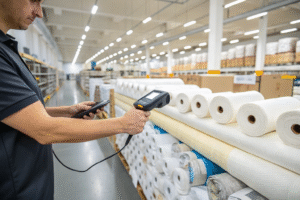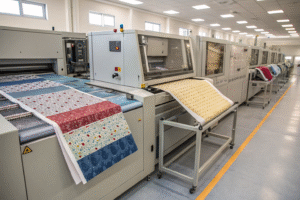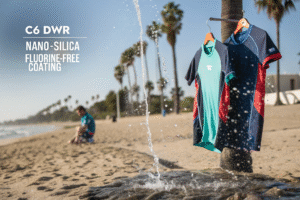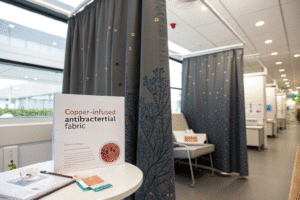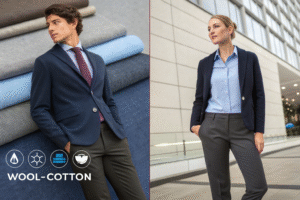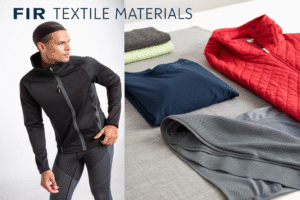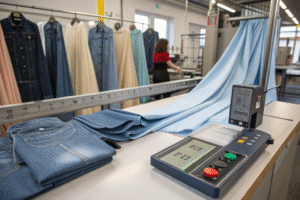Choosing the wrong fabric can ruin a workout—or your product line. Imagine selling activewear that clings, overheats, or smells after a few uses. In 2024, performance-driven buyers expect more. What fabrics actually deliver?
The best moisture-wicking fabrics for sportswear in 2024 include polyester-spandex blends, bamboo charcoal, Tencel™, and high-performance recycled synthetics. These fabrics combine sweat management, breathability, and stretch—making them ideal for gym wear, yoga lines, and outdoor gear.
Let’s explore the trending fabrics, technologies, and sourcing strategies that keep your customers dry, cool, and loyal.
What are the trendy fabrics in 2024?
Fashion and function are no longer separate. Imagine offering fabrics that perform well and align with global style trends. Which materials are hot this year?
In 2024, the trending fabrics for sportswear combine sustainability, texture, and tech. Recycled polyester, bamboo blends, mesh jacquards, and natural-feel synthetics dominate activewear lines. Brands are blending innovation with eco-conscious storytelling to drive both appeal and performance.
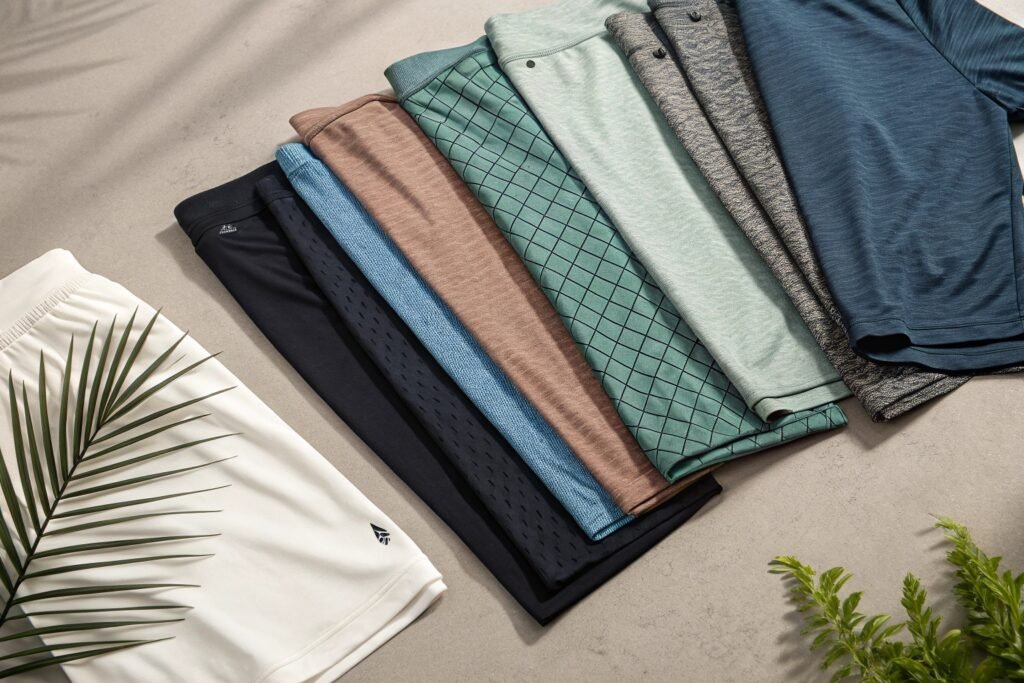
Why are textured synthetics gaining popularity?
Fabrics like honeycomb mesh and waffle knits offer both visual appeal and sweat-channeling properties. At Fumao Fabric, we supply textured polyester blends that enhance airflow while adding a modern look to sports tees and leggings. Our buyers are using these in fashion-forward gym collections.
What role do eco-certifications play?
With OEKO-TEX® and GRS certification, fabrics don’t just feel good—they reassure customers. 2024's trends aren't only about looks; they’re about responsible sourcing. We offer recycled spandex, RPET, and bamboo-charcoal knits that align with ESG goals.
Which fabric is the most moisture-wicking?
Not all fabrics that claim to “wick moisture” actually perform. Imagine getting it right from the start. What fabrics truly lead in 2024?
The most moisture-wicking fabric for sportswear is polyester blended with elastane or spandex. This combination pulls sweat from skin, dries quickly, and stretches well. Advanced variations like micro-poly and RPET offer even better performance.
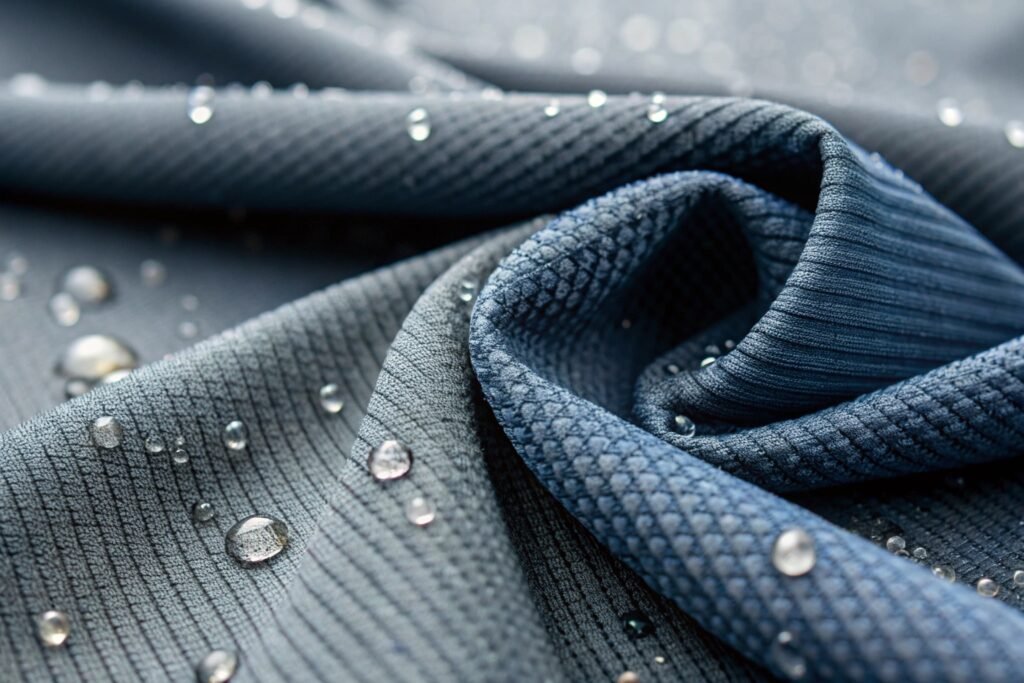
How does wicking technology work?
Wicking means drawing moisture from the skin to the fabric’s outer surface. Here, it evaporates. Our knit structures—like tricot and interlock—are engineered for capillary action, combined with hydrophobic yarns that move sweat efficiently.
What fabric types should you avoid?
- 100% cotton: It absorbs and retains sweat
- Low-grade rayon: May cling and lose shape
- Non-engineered polyester: Can trap odor
Fumao’s sportswear clients often switch to dual-surface fabrics—smooth inside, textured outside—for maximum moisture movement.
Which fabric has the future of breathability?
It’s not just about wicking—it’s about airflow. Imagine offering leggings or tops that breathe like mesh, even when they look solid. Which fabrics are leading breathability innovation?
Fabrics with open-knit structures, engineered vents, and lightweight yarns like micro-modal, bamboo rayon, and AirTech polyester are shaping the future of breathable sportswear. Their comfort, cooling, and style potential set them apart.
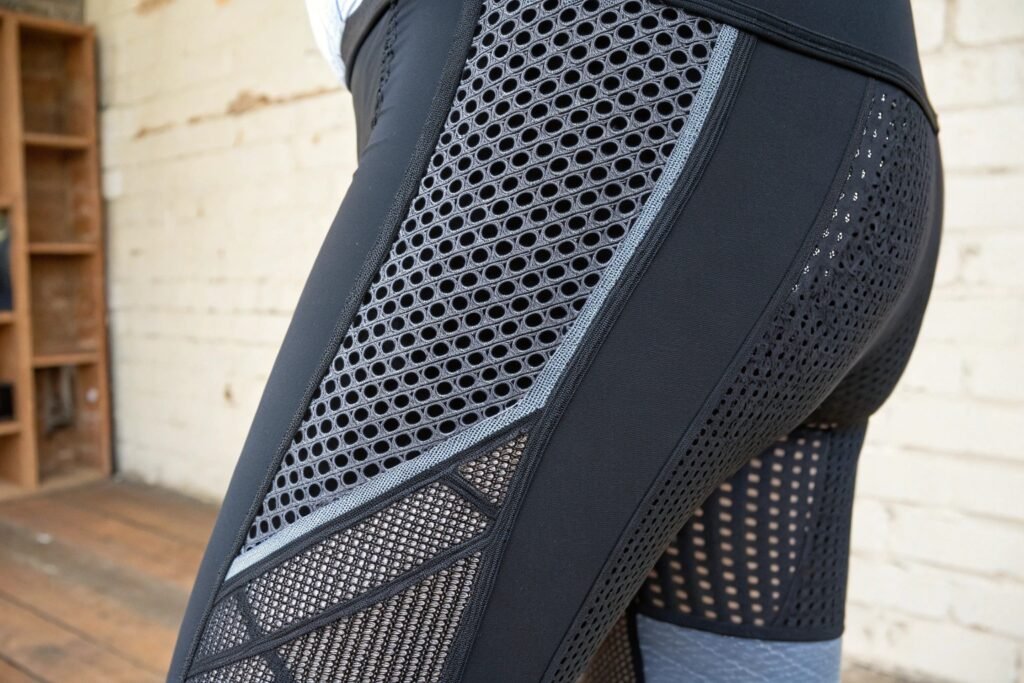
What makes a fabric breathable?
- Low fabric density
- Hollow or ultra-thin fibers
- Mesh zones or laser perforations
- Moisture permeability + air permeability balance
We develop interlock and tricot knits with zonal mesh and micro-perfs for clients launching “breathable tech” lines. They look sleek but regulate heat under pressure.
Are natural fabrics breathable?
Yes—especially when blended smartly. Bamboo viscose, Tencel™, and modal wick well and feel cool. We blend them with recycled synthetics to keep shape and strength intact, creating hybrid fabrics for modern sportswear.
What is the best material for Dri fit?
Many buyers associate “Dri-FIT” with a single brand. But the technology is replicable. Imagine offering the same performance—without the trademark. What materials match or outperform?
The best material for Dri-FIT-style performance is a polyester-spandex blend with engineered knit patterns and wicking finishes. Tricot or pique weaves with chemical moisture treatments provide the same feel and functionality.
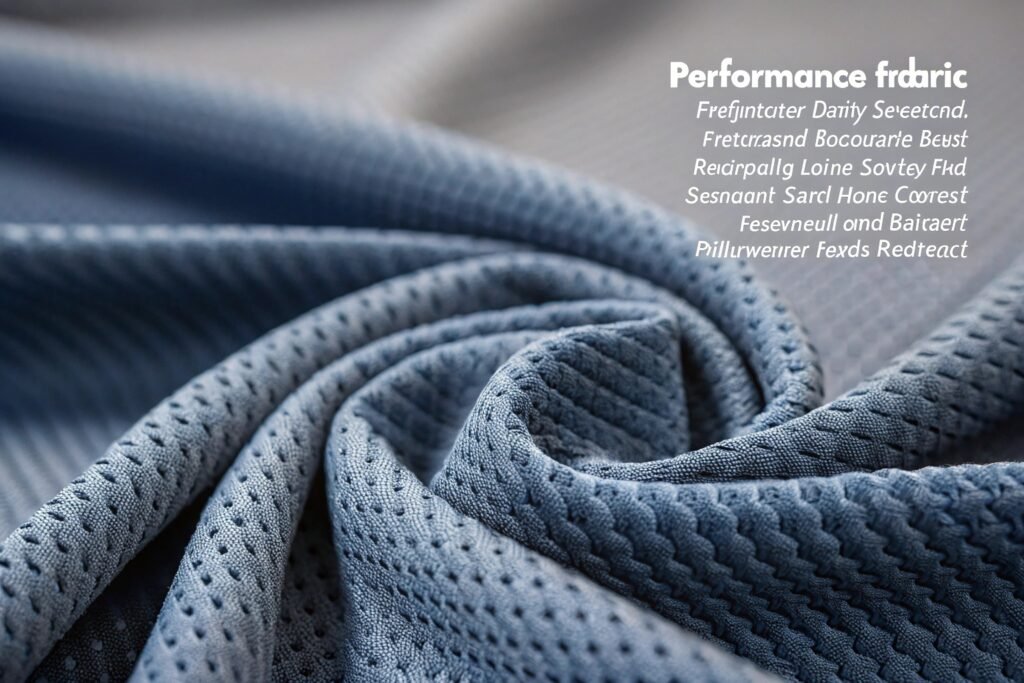
What is the structure of Dri-FIT-style fabrics?
Dri-FIT fabrics typically have:
- Hydrophobic polyester yarns
- Moisture-wicking finishes
- Stretch fibers (e.g., Lycra)
- Zoned ventilation
We offer equivalent fabrics branded as “AirMove” or “DryX”—made in our Keqiao facilities and tested under SGS protocols.
How do we help brands develop Dri-FIT alternatives?
At Fumao Fabric, we:
- Customize GSM and stretch levels
- Provide lab reports for wicking rate, drying time
- Offer MOQ flexibility for startups and bulk capacity for large brands
Many of our U.S. clients develop custom prints or colorways using our moisture-wicking base fabrics.
Conclusion
Choosing the best moisture-wicking fabric in 2024 means balancing performance, style, and sustainability. From polyester-spandex to bamboo-Tencel hybrids, we help brands source fabrics that keep athletes and everyday wearers dry, cool, and comfortable. With Fumao Fabric, you’re not just following trends—you’re shaping them.
